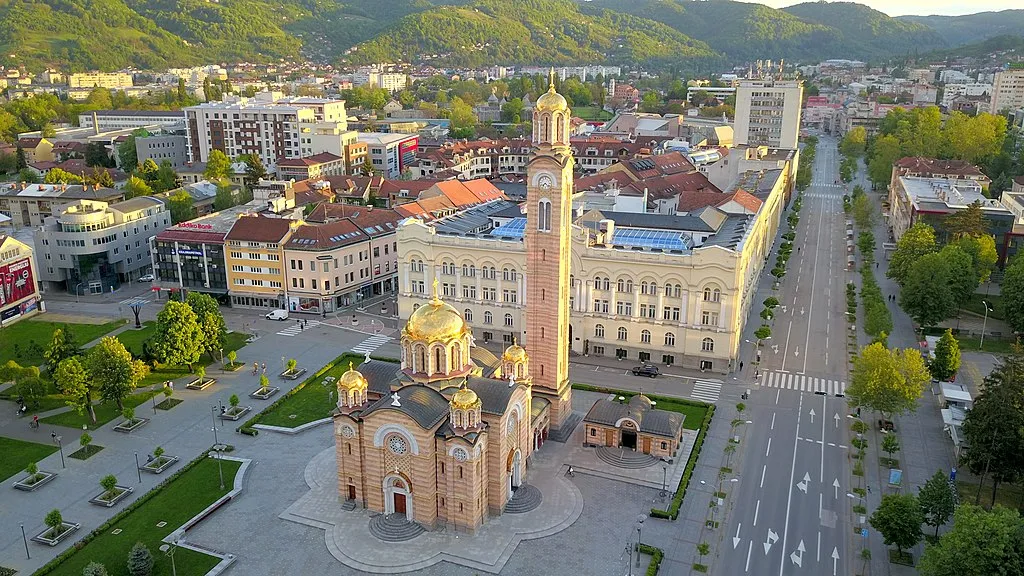History of Banja Luka
Banja Luka, alternatively spelled Banjaluka, is a city located in the northern region of Bosnia and Herzegovina. Situated at the confluence of the Vrbas River and the Vrbanja River, it serves as the capital of Republika Srpska, which is one of the two predominantly autonomous entities comprising Bosnia and Herzegovina.
Historically, during the period of Ottoman Turkish rule, Banja Luka held significant military importance and served as the original seat of the Bosnian paşalik (a territory governed by a pasha). However, its commercial prosperity dwindled due to devastating fires and plagues in the 17th and 18th centuries. In the 19th century, Banja Luka played a crucial role in the uprisings of the Bosnians against the Ottoman Empire, as well as in the revolts of the Serbs. The city’s economy experienced a revival under the rule of Austria-Hungary from 1878 to 1918.
During World War II, Banja Luka and its surroundings became a center of resistance for the Partisans while being part of the Axis-controlled state of Croatia. After 1945, a new industrial area was developed in the city. In 1969, Banja Luka suffered significant damage from an earthquake and underwent extensive reconstruction thereafter.
During the Bosnian conflict, which ensued after Bosnia’s secession from Yugoslavia in 1992, Banja Luka became the primary center for Bosnian Serbs in the northern region of the country. Serbs resorted to violence and other forms of persecution to forcibly expel thousands of Bosniaks (Bosnian Muslims), Croats, Roma (Gypsies), and others from the city and its surrounding areas. As part of their campaign to drive out Bosniaks, Bosnian Serbs destroyed several mosques in Banja Luka, including notable ones dating back to the Ottoman era, such as the Ferhadija (1579–83) and the Arnaudija (1587).
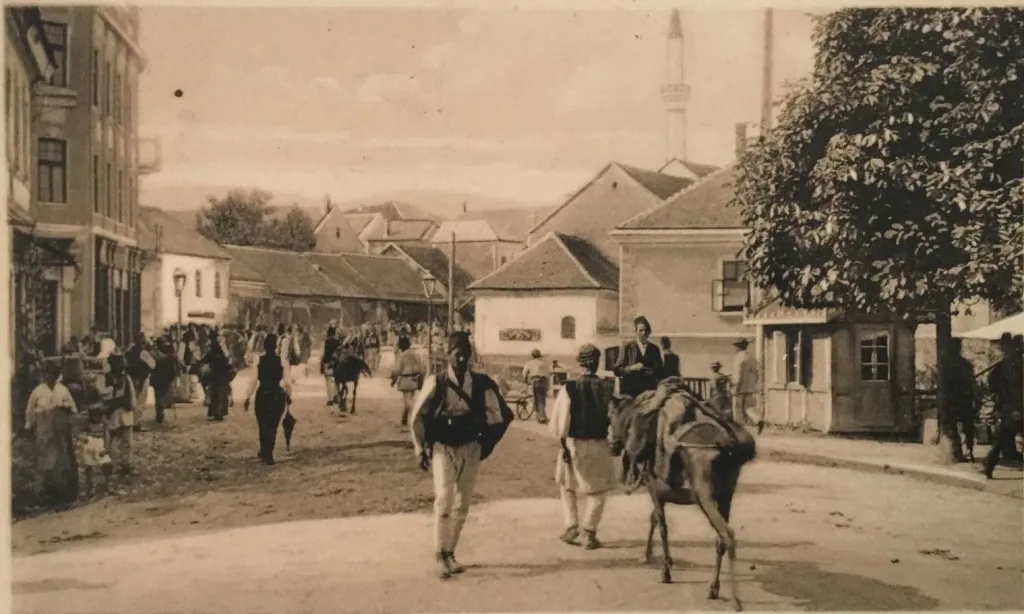
Banja Luka’s economy encompasses various industries, including fruit and vegetable canning, tobacco processing, brewing, and the production of machine tools, electrical appliances, clothing, pulp and paper, and synthetic fibers. The city is well-connected by road to Zagreb, Jajce, and Sarajevo. As of 2019, its population was recorded at 184,843.
Map of Banja Luka
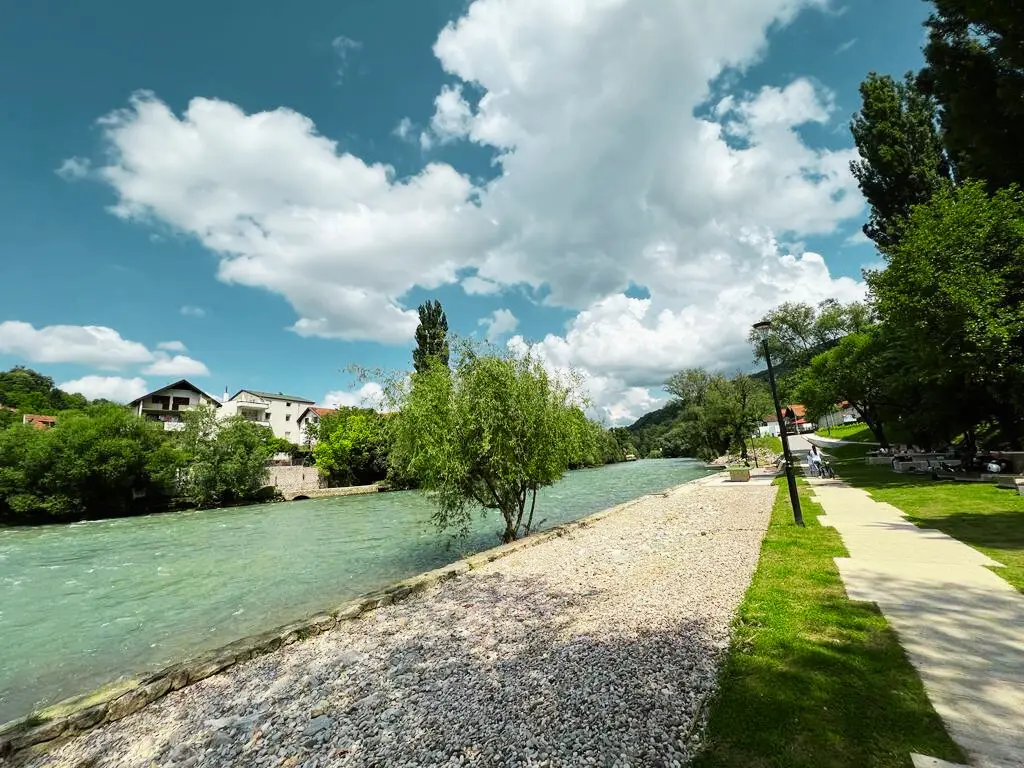
Getting to the City
Banja Luka is well-connected and can be reached by various modes of transportation. Here are some common ways to get to Banja Luka:
[1] By Air
The nearest international airport is Banja Luka International Airport (BNX), located approximately 23 kilometers northeast of the city center. Several airlines offer direct flights to Banja Luka from major European cities like Ryanair and Easyjet.
[2] By Road
Banja Luka is accessible by road, and it has good connections with neighboring countries. If you are coming from Croatia, you can drive from Zagreb (approximately 180 kilometers) or take a bus from major Croatian cities. From Serbia, you can drive from Belgrade (approximately 235 kilometers) or take a bus from Serbian cities.
[3] By Bus
Banja Luka has a well-developed bus network, and there are regular bus services like Flixbus and blablabus connecting the city with various domestic and international destinations. You can find buses from major cities in Bosnia and Herzegovina, as well as from neighboring countries.
[4] By Train
Banja Luka has a train station, you can buy your tickets from zfbh but train services may be less frequent and slower compared to other modes of transportation. However, you can find train connections to Banja Luka from Sarajevo and other cities within Bosnia and Herzegovina.
Once you arrive in Banja Luka, local transportation options include taxis, buses, and walking, as the city center is relatively compact and easily navigable on foot. Taxis are readily available, and the city has a reliable public bus system that can take you to different parts of the city and its surroundings.
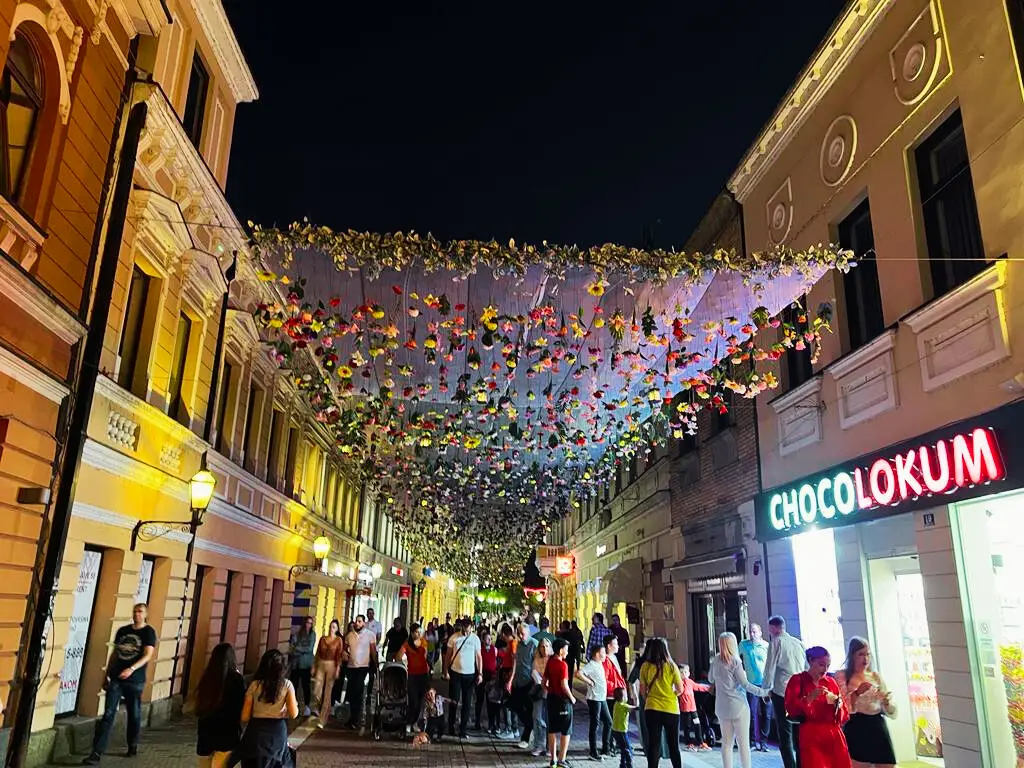
Top Attractions in Banja Luka
Banja Luka offers a range of interesting places to visit. Here are some popular attractions and places to explore around the city:
[1] Kastel Fortress
This medieval fortress is a symbol of Banja Luka and offers panoramic views of the city. It houses a museum with exhibits showcasing the history of the region.It stands as an iconic symbol of the city’s rich history and architectural heritage. With its imposing stone walls and commanding position atop a hill, the fortress offers visitors a glimpse into Banja Luka’s medieval past. Inside its walls, you can explore a museum that houses exhibits showcasing the region’s history and artifacts from various periods.
From the top of the fortress, breathtaking panoramic views of the city and surrounding landscapes unfold, providing a perfect vantage point to appreciate the beauty of Banja Luka. The Kastel Fortress is a must-visit destination for history enthusiasts and those seeking a unique cultural experience.
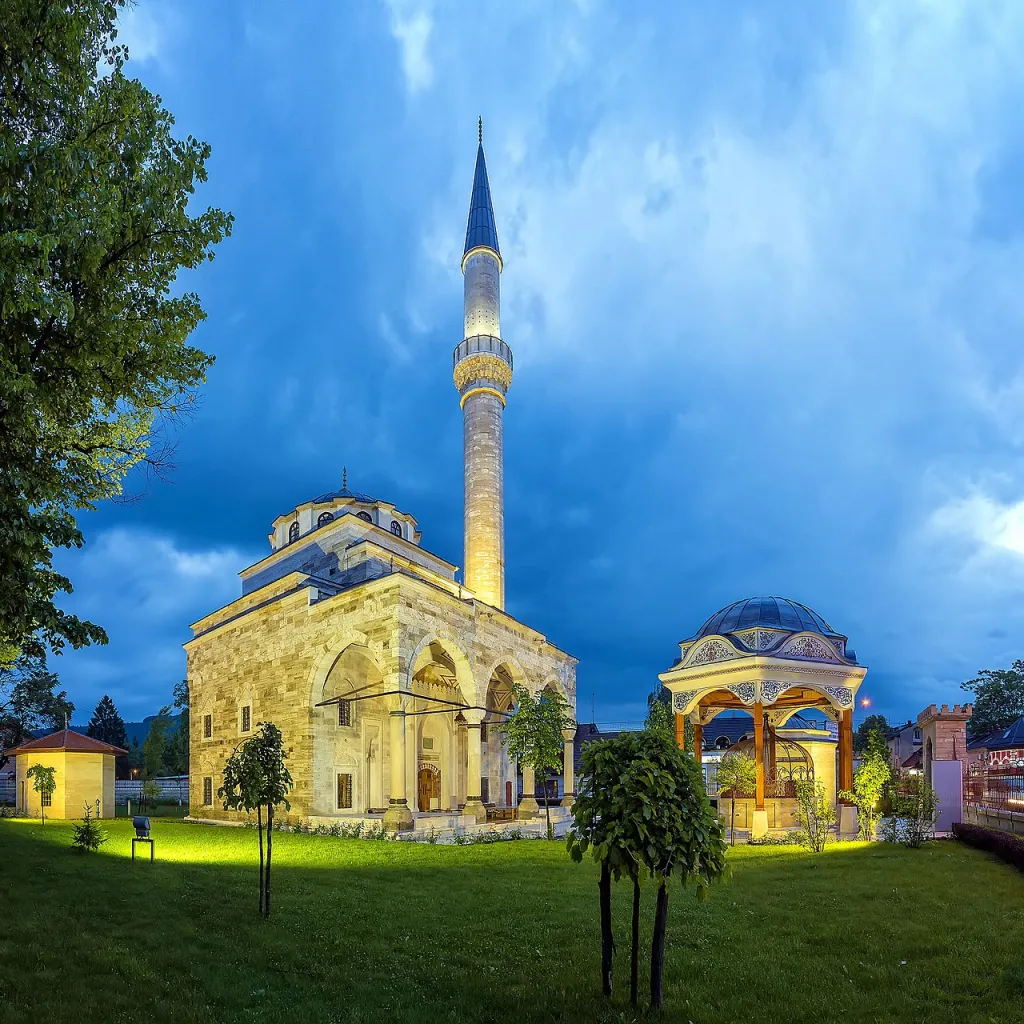
[2] Ferhadija Mosque
The Ferhadija Mosque (Ferhat Pasha Mosque) is a remarkable architectural gem that reflects the city’s religious diversity and cultural heritage. Built in the 16th century during the Ottoman era, the mosque stands as a testament to the Islamic influence in the region. Its elegant design features intricate calligraphy, decorative motifs, and a graceful minaret. The interior boasts a serene ambiance, with beautiful prayer halls and ornate details.
The Ferhadija Mosque serves as a symbol of religious tolerance and harmony in Banja Luka, attracting visitors who are mesmerized by its historical significance, architectural beauty, and the peaceful atmosphere it embodies.
[3] Banja Luka City Museum
Located in the city center, The Banja Luka City Museum is a treasure trove of history and culture, surprising visitors with its extensive collection and immersive exhibits. Housed in a historic building, the museum offers a fascinating journey through the past of Banja Luka and its surrounding region. From archaeological artifacts dating back to ancient times to exhibits showcasing the city’s medieval, Ottoman, and Austro-Hungarian periods, the museum provides a comprehensive overview of the area’s rich heritage.
Paintings, sculptures, photographs, and historical documents further enhance the experience, shedding light on the diverse cultural influences that have shaped Banja Luka throughout the centuries. A visit to the Banja Luka City Museum promises an enlightening and enriching exploration of the city’s captivating past.
[4] Gospodska Street
Gospodska Street is the lively heartbeat of Banja Luka, offering a vibrant and bustling atmosphere that attracts locals and visitors alike. This pedestrian street serves as a vibrant hub of activity, lined with an array of shops, boutiques, cafes, restaurants, and historical buildings. Strolling along Gospodska Street, one can soak in the city’s vibrant energy, indulge in shopping sprees, sample delicious local cuisine, and experience the charm of the surrounding architecture.
The street’s busy ambiance, combined with its lovely setting, creates an inviting environment for leisurely walks, people-watching, and immersing oneself in the spirit of Banja Luka.
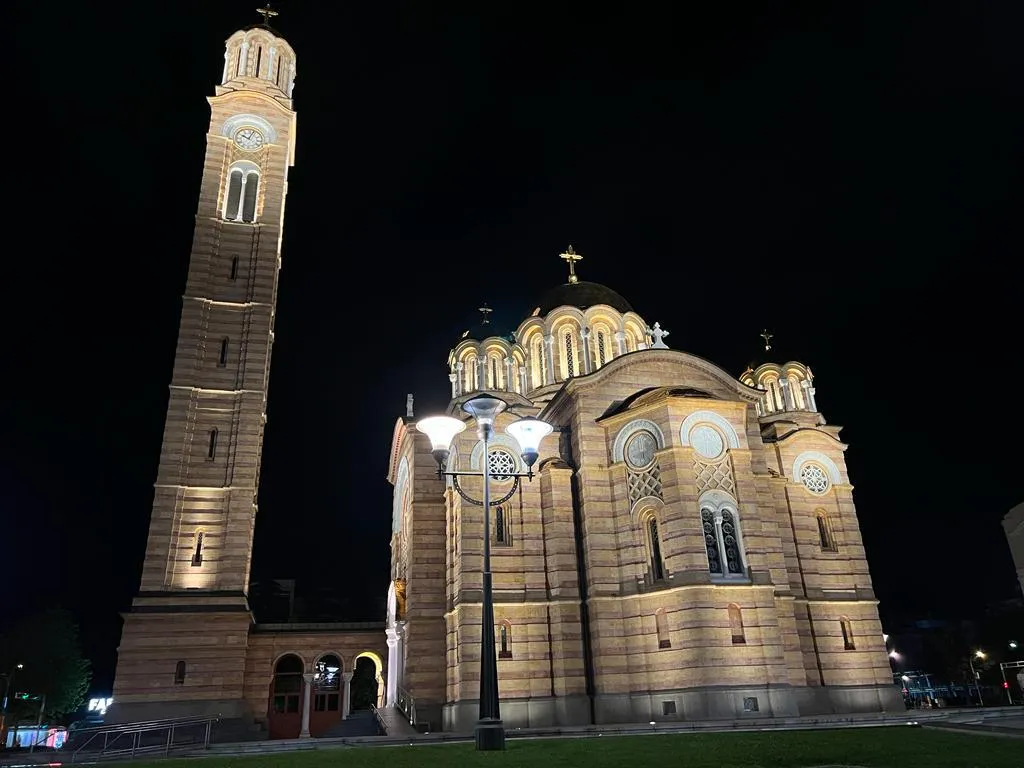
[5] Christ the Savior Orthodox Cathedral
The Cathedral of Christ the Savior is a Serbian Orthodox church situated in the city. Initially constructed as the Holy Trinity Church in the interwar period, it suffered damage during World War II and was later demolished by the Ustashas. Following the Bosnian war, reconstruction of the church, under the name Cathedral of Christ the Savior, commenced in 1993. The new cathedral, made of red and yellow travertine stone, is architecturally identical to its predecessor and features a 47-meter bell tower and a 22.5-meter dome. It was consecrated in 2009.

[6] Kozara National Park
Kozara National Park is a natural gem located 56 km north from the city. Spanning over 33,000 hectares, the park is known for its diverse landscapes, including dense forests, meadows, and picturesque mountains. Visitors can explore a network of hiking and biking trails, which offer breathtaking views and opportunities for outdoor adventures. Kozara is also home to a rich biodiversity, with numerous plant and animal species inhabiting its protected areas.
Additionally, the park holds historical significance, as it was the site of a major World War II battle. Kozara National Park offers a perfect blend of natural beauty and historical heritage for nature enthusiasts and history buffs alike.

[7] Banski Dvor Cultural Center
The Banski Dvor Cultural Center is a renowned hub for arts, culture, and entertainment. Housed in a stunning building that combines neoclassical and modern architectural elements, the center hosts a wide range of events and activities. It features a concert hall, art galleries, theaters, and conference rooms, providing a versatile space for exhibitions, concerts, theater performances, and other cultural events. The Banski Dvor Cultural Center is a vibrant cultural institution that enriches the city’s cultural scene and serves as a gathering place for artists, performers, and art enthusiasts, contributing to the cultural vibrancy of Banja Luka.
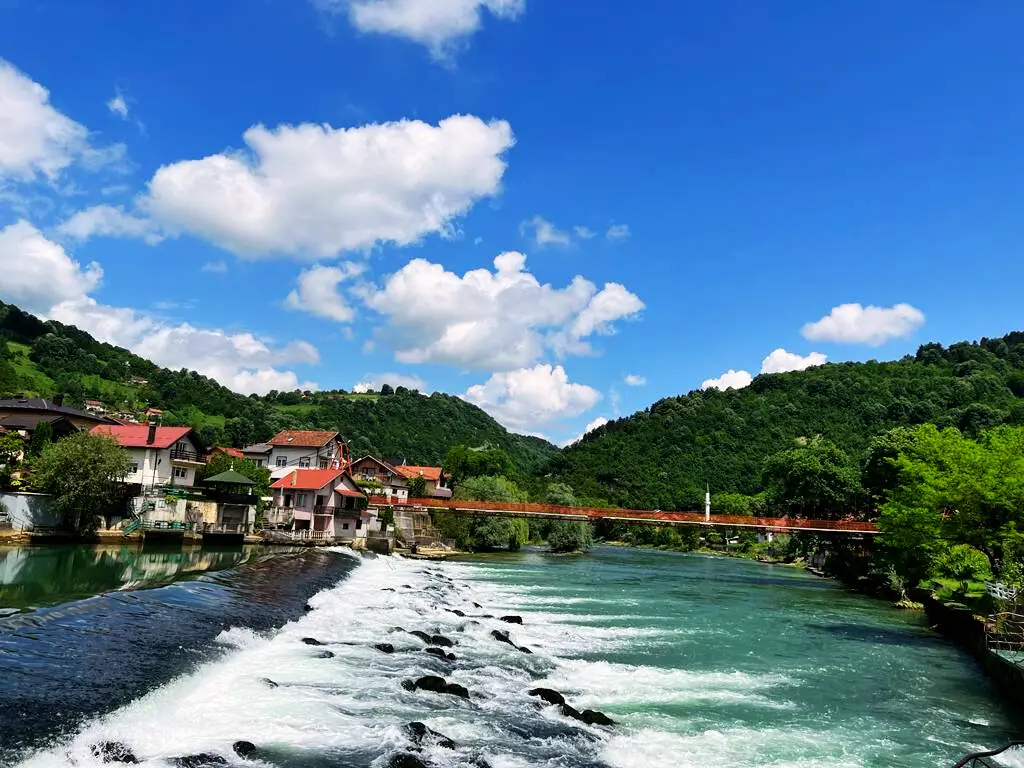
[8] Vrbas River
The Vrbas River is the main waterway that flows through the city. It is a significant natural and cultural landmark of the region. The river meanders through the city, providing stunning views and recreational opportunities for locals and visitors. Its clear waters are perfect for various water activities, such as kayaking, rafting, and fishing. The Vrbas River is also surrounded by lush greenery and parks, creating a tranquil and relaxing ambiance. Along its banks, there are charming promenades and bridges that connect different parts of the city, offering scenic walks and a chance to admire the river’s beauty.
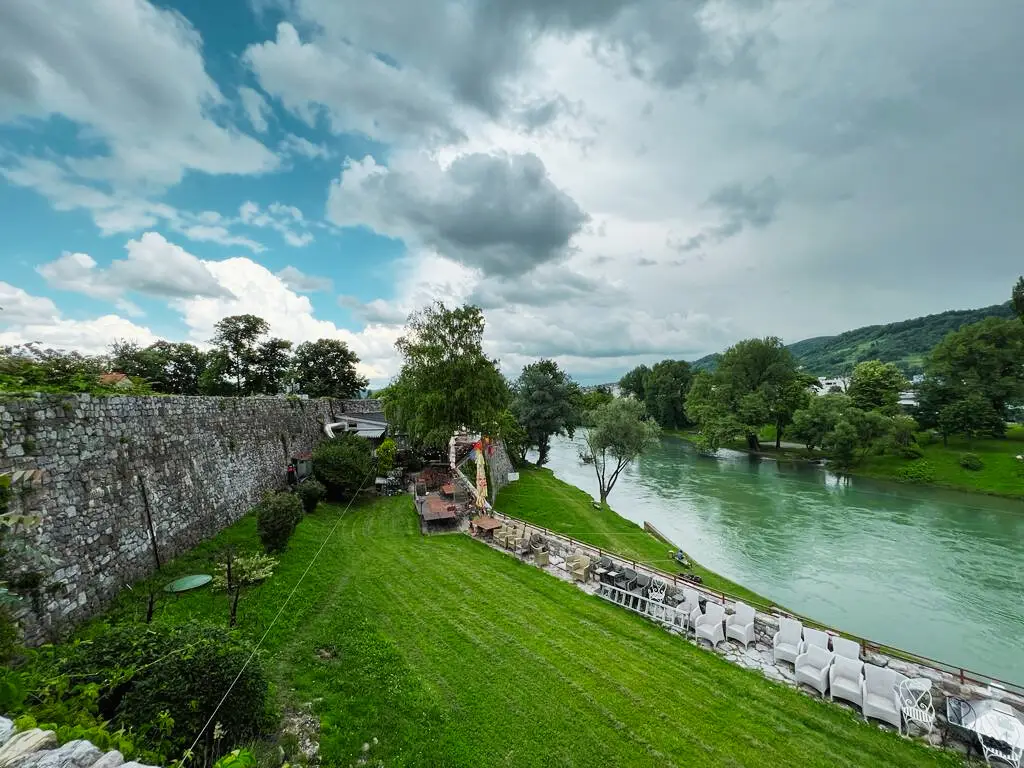
[9] Petricevac Forest Park
Petricevac Forest Park is a serene natural retreat. Covering an extensive area of lush woodlands, it serves as a popular recreational destination for locals and tourists alike. The park offers a peaceful atmosphere, with winding paths that lead visitors through tall trees and tranquil greenery. It provides ample opportunities for outdoor activities such as hiking, jogging, and picnicking. Petricevac Forest Park is also home to diverse flora and fauna, making it a haven for nature enthusiasts and bird watchers.
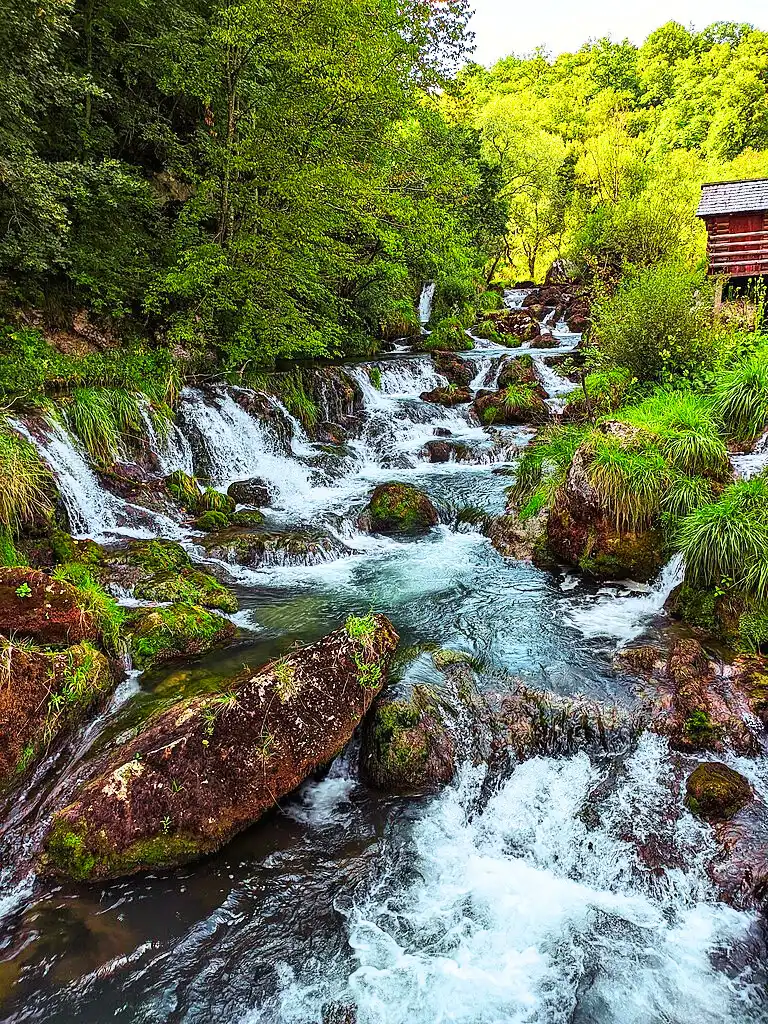
[10] Krupa Waterfalls
Krupa Waterfall, also known as Krupa na Vrbasu, is a beautiful natural attraction near Banja Luka, situated approximately 25 kilometers northeast of Banja Luka, in the village of Krupa na Vrbasu.
Krupa Waterfall is formed by the Krupa River, which flows through a series of cascades and creates a stunning sight. The waterfall is surrounded by lush greenery and rocky cliffs, adding to its natural beauty. The area around the waterfall is also known for its crystal-clear waters, making it a popular spot for swimming, picnicking, and enjoying nature.
Visiting Krupa Waterfall offers a peaceful and tranquil escape from the city, allowing visitors to relax and enjoy the scenic surroundings. The sound of cascading water and the fresh air create a soothing atmosphere that attracts both locals and tourists. To reach Krupa Waterfall from Banja Luka, you can either drive or take a bus to the village of Krupa na Vrbasu. From there, it’s a short walk to the waterfall. It’s recommended to check the local transportation options and visitation guidelines before planning your trip, as they might vary.
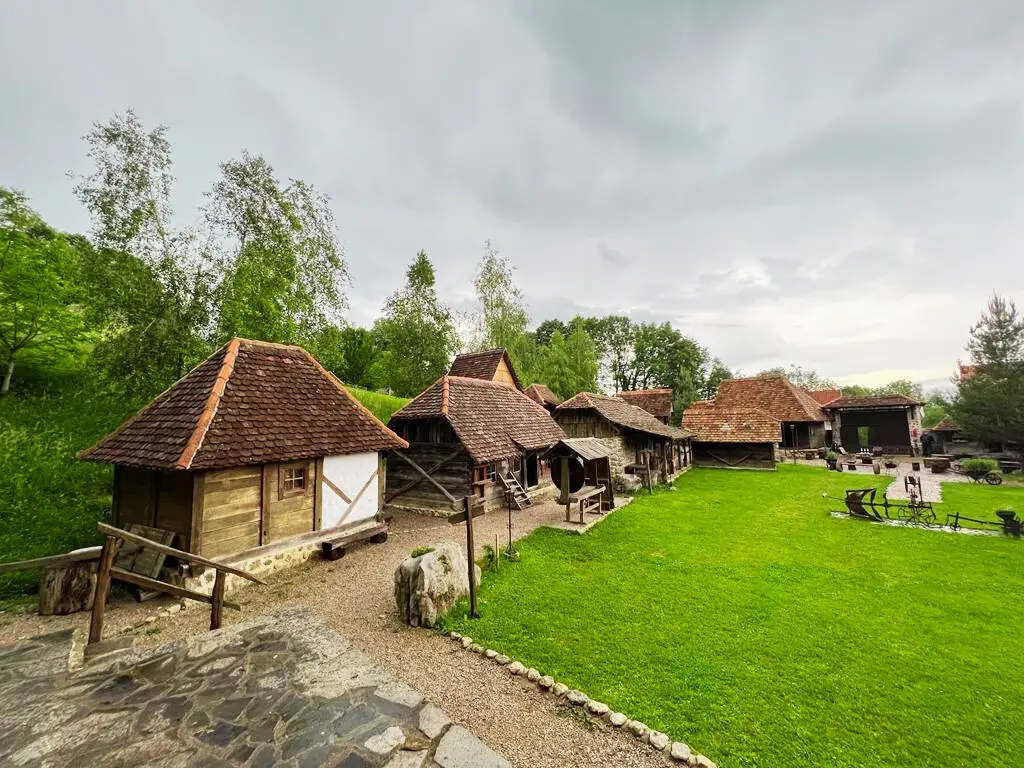
[11] Ethno Village – Museum Ljubačke Doline
Located just 20 km away from Banja Luka, the Ljubačke Ethno Museum provides a historical glimpse into the rural lifestyle of the Serbian people during the late 18th century. It boasts an array of authentic peasant huts, offering visitors a scenic view of the village. The museum houses an impressive collection of over 6,000 artifacts, thoughtfully categorized into various collections such as craftsmen houses, a rural school, a church, and shepherds’ cabins. Additionally, make sure not to overlook the opportunity to savor delightful cuisine, homemade juices, and traditional coffee at their charming small tavern.
#Other Mentions
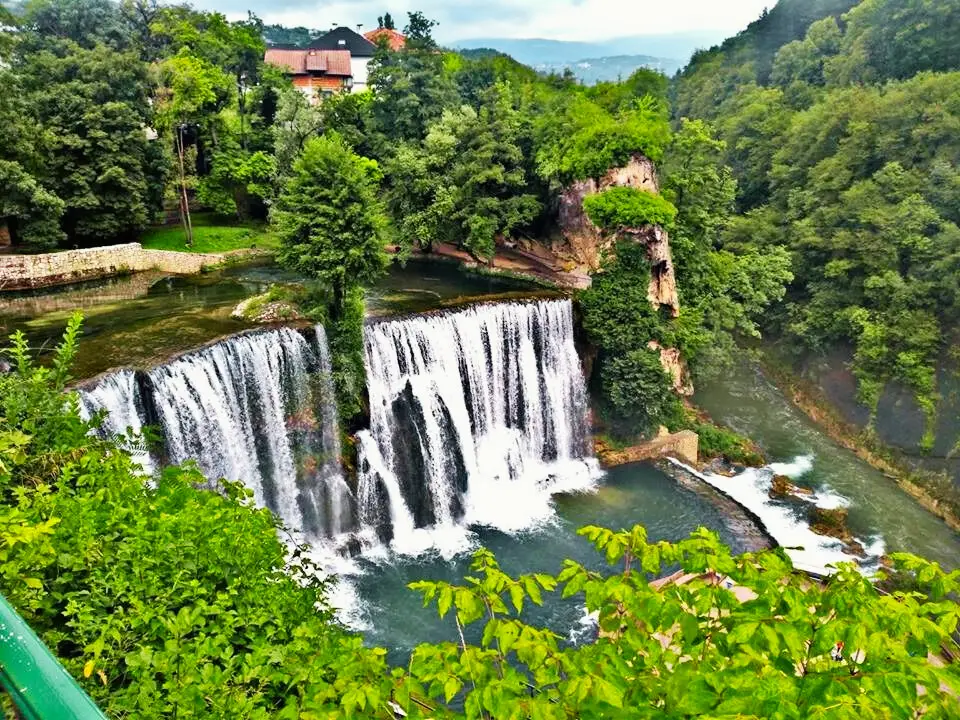
Pilva Waterfalls
The Pliva Waterfall is situated near the town of Jajce, 70 km south from Banja Luka in central Bosnia and Herzegovina. It occurs at the point where the Pliva River joins the Vrbas River. The waterfall is formed by a large natural barrier called tufa or travertine. It creates a cascade of more than 22 meters along the Pliva River within a narrow area of rocky terrain known as karst. This region follows the course of the Pliva River and is located where flysh (a type of sedimentary rock) and limestone meet.
Originally, the waterfall was 30 meters high, but due to an earthquake and attacks on the nearby power plant during the Bosnian war, the area was flooded, resulting in a reduced height of 22 meters.
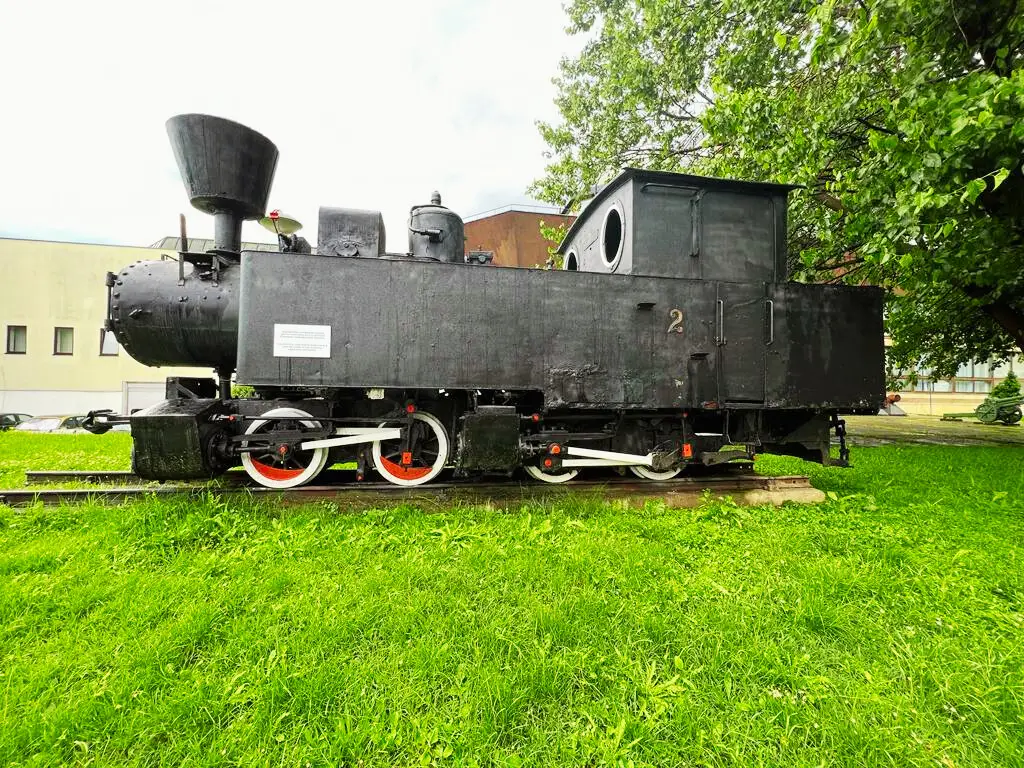
Museum of Republika Sprska
The construction of the Museum of the Republic of Srpska was commissioned by Ban Tisa Milosavljevic in 1930. Initially named the Museum of Vrbas Banovina, it was closed during World War II. Following the war in 1945, the museum underwent several relocations and name changes. In 1992, it was established in its current form and continues to showcase diverse exhibitions, including prehistoric artifacts, antiquities, medieval displays, and exhibits from the Ottoman era, among others.
Where to Stay
Top Picks
[2] Apartmani Koko
[3] Apartman Krasota
[4] Vila San
[5] Park & Play
[6] Hotel IN
Where to Eat
Banja Luka offers a variety of dining options, ranging from traditional Bosnian cuisine to international flavors. Here are some popular places to eat in Banja Luka:
[1] Kod Muje
This restaurant is known for its authentic Bosnian cuisine, including dishes like cevapi, burek, and traditional stews. It offers a cozy atmosphere and friendly service.
[2] Šaran
Located near the Vrbas River, Šaran is a renowned fish restaurant that specializes in freshwater fish dishes. It offers a beautiful setting and a wide selection of fish prepared in various styles.
[3] Obelix
[5] Kruna
Kruna is a family-friendly restaurant that serves a range of dishes, including pizza, pasta, burgers, and traditional Balkan cuisine. It offers a relaxed atmosphere and indoor/outdoor seating options.
[6] Stara Ada
Situated on the banks of the Vrbas River, Stara Ada is a picturesque restaurant that serves grilled specialties, seafood, and traditional Bosnian dishes. It offers a serene setting and beautiful views.
[7] Mala Stanica
This trendy establishment combines a restaurant, bar, and lounge, offering a diverse menu of international dishes, cocktails, and a vibrant atmosphere.
[8] Roštiljnica A&D
Roštiljnica A&D is a charming garden restaurant that serves grilled meats, salads, and traditional Bosnian dishes. It has a lovely outdoor seating area and a cozy interior.
If you’re a wine lover, Barrique Wine & Deli is a great place to visit. It offers a selection of wines from Bosnia and Herzegovina, as well as cheese and charcuterie platters to complement your wine tasting experience.
When to visit Banja Luka
The best time to visit Banja Luka largely depends on your preferences and the activities you plan to engage in. Here’s a breakdown of the different seasons and weather of the city-
[1] Spring (March to May)
Spring in Banja Luka brings mild temperatures and blossoming nature. It’s a great time for outdoor activities, such as exploring parks and enjoying pleasant walks along the Vrbas River. The weather is generally comfortable, with temperatures ranging from around 10°C (50°F) in March to 20°C (68°F) in May.
[2] Summer (June to August)
Summers in Banja Luka are warm and sunny, with temperatures ranging from 25°C (77°F) to 35°C (95°F). It’s an ideal time to visit if you enjoy outdoor activities like hiking, rafting, or exploring the surrounding nature. The city comes alive with festivals, events, and a vibrant atmosphere during this season.
[3] Autumn (September to November)
Autumn in Banja Luka offers mild temperatures and stunning foliage as the leaves change color. It’s a beautiful time to visit if you appreciate nature and want to experience the city’s parks and outdoor spaces in a tranquil setting. Temperatures range from around 15°C (59°F) in September to 10°C (50°F) in November.
[4] Winter (December to February)
Winters in Banja Luka are cold, with temperatures averaging around 0°C (32°F). If you enjoy winter sports, nearby ski resorts like Kozara and Manjača offer opportunities for skiing and snowboarding. The city is also decorated for the holiday season, and you can experience the festive atmosphere.
It’s worth noting that Banja Luka is a year-round destination, and each season has its own charm. The summer months are generally busier with tourists, while spring and autumn offer milder weather and a more relaxed ambiance. Consider your preferences for weather, outdoor activities, and crowd levels when deciding the best time for your visit.
Find other travel destinations from Southern Europe.

